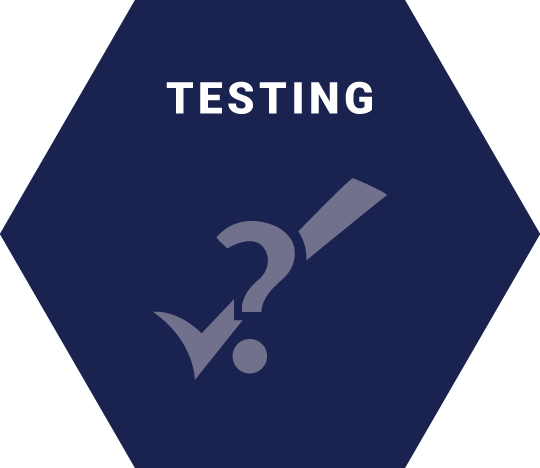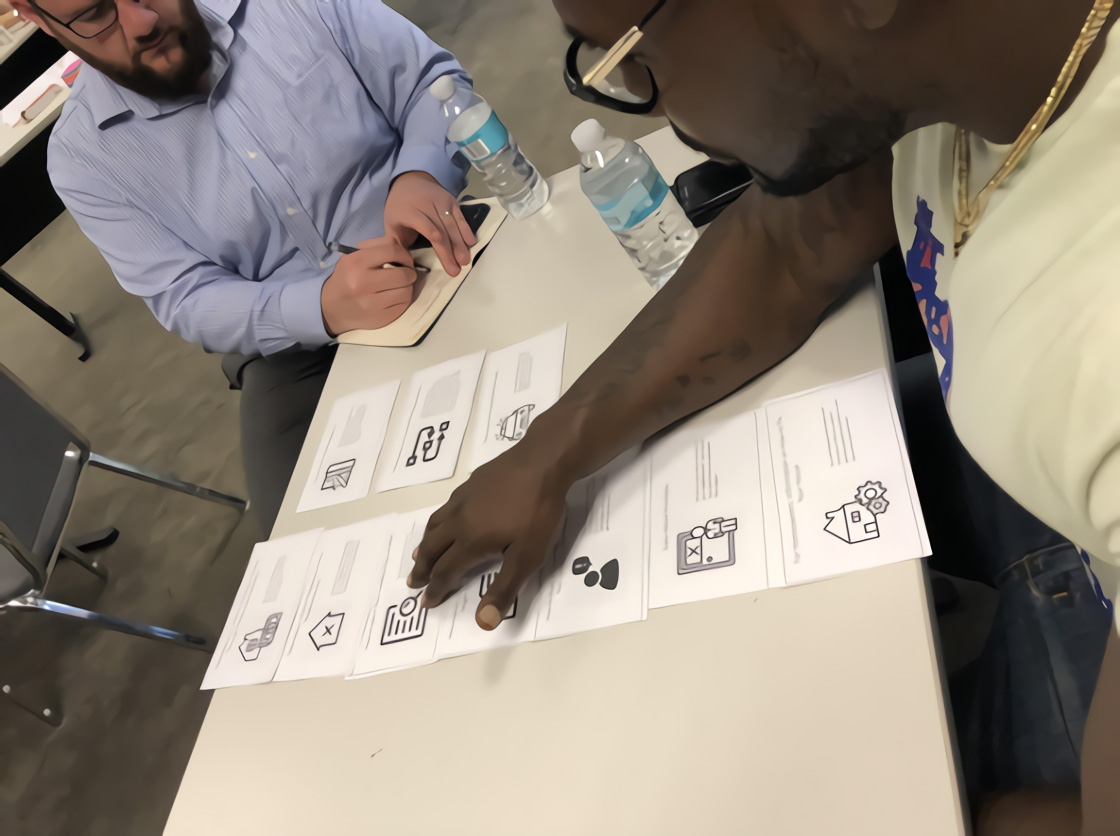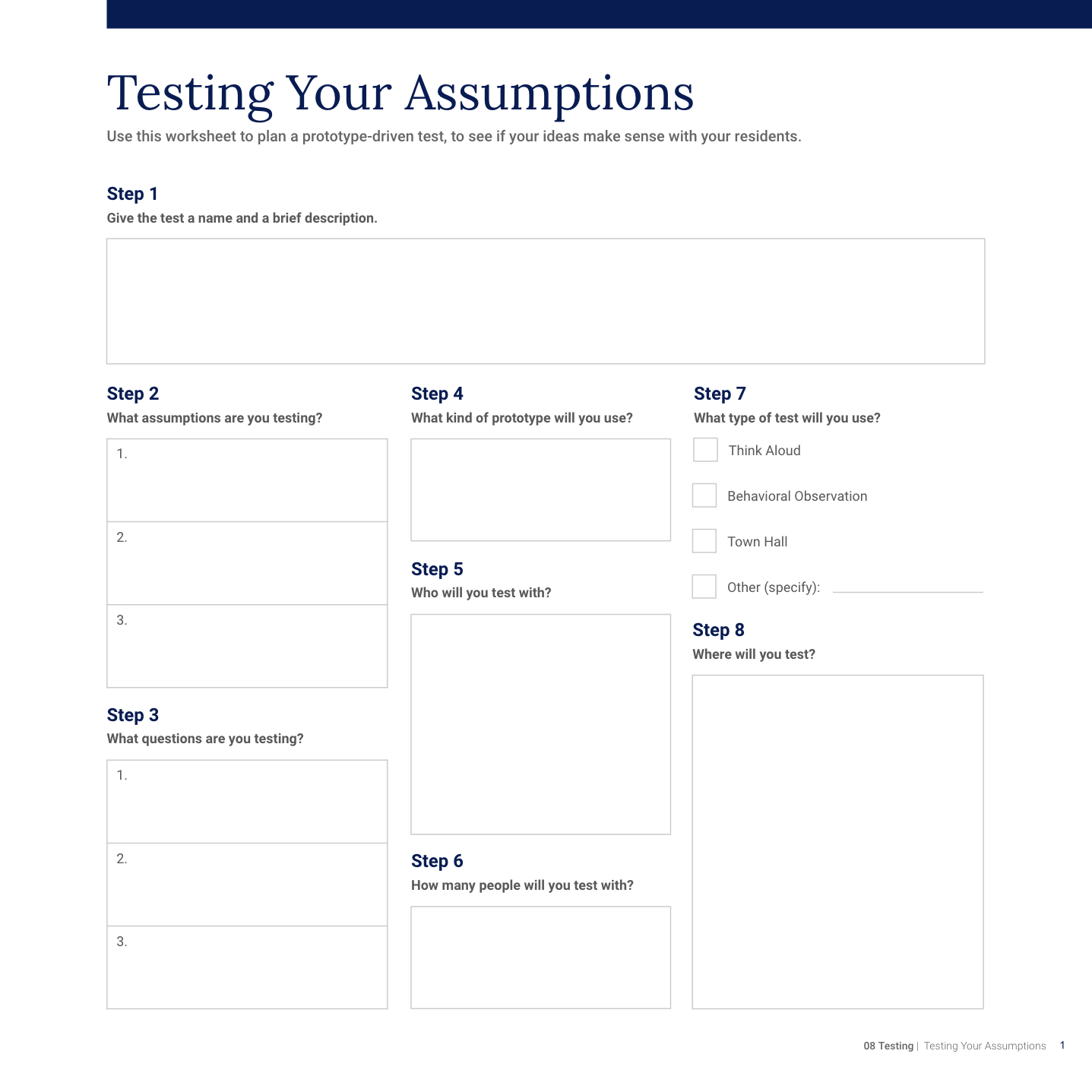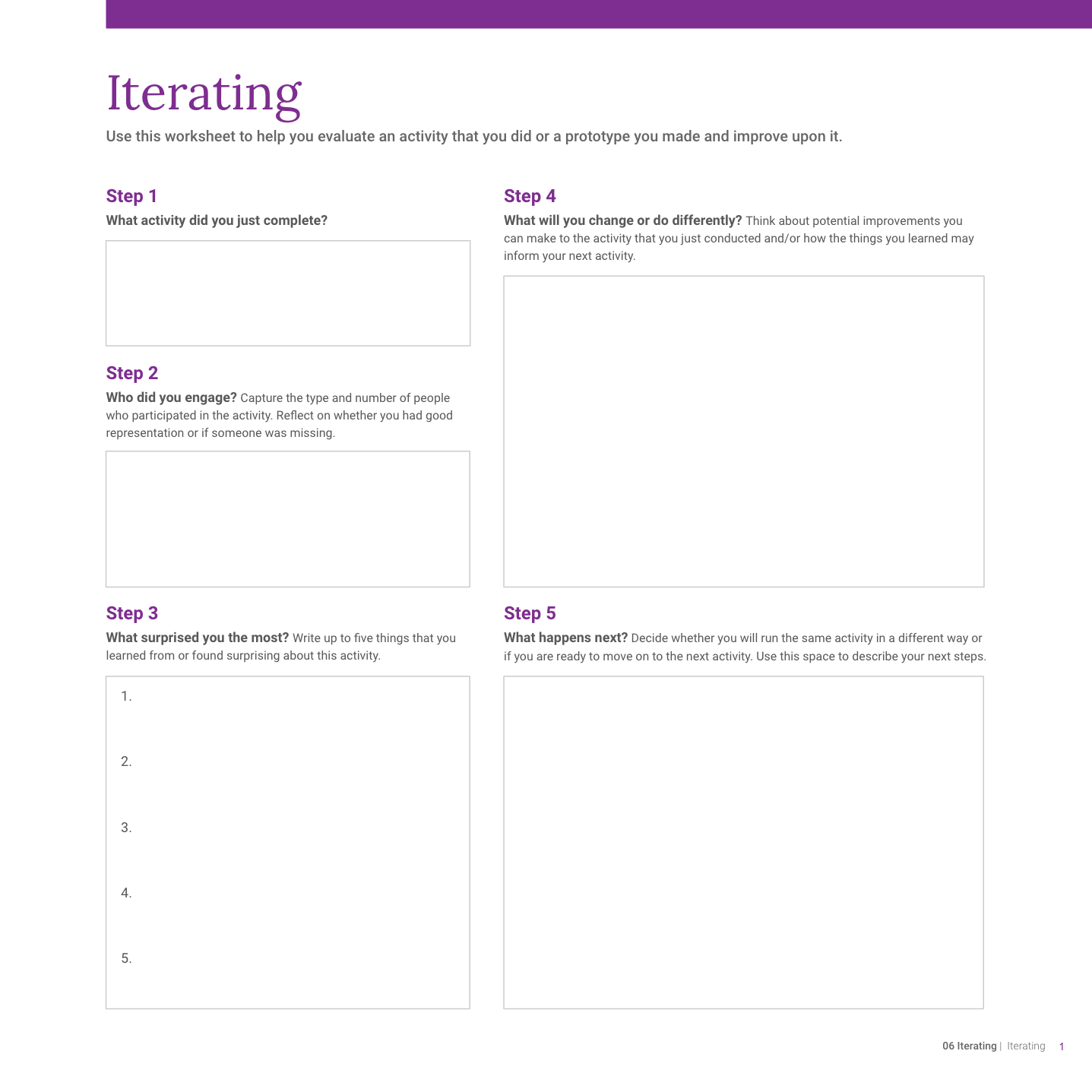
What is Testing?
Testing is a way of gathering feedback on a prototype and involving community members in refining a solution. A prototype could be a draft document, concept paper, or artistic rendering to propose an idea, such as a new name for a school, selection of a school mascot, plans for consolidation, or a budget allocation. Testing your prototype helps you quickly understand if your idea makes sense and is of use and value to others.
By Testing your prototype, you can get feedback on whether your assumptions are aligned with those who would benefit from your idea. You can test at any stage––from a very conceptual prototype to a very detailed and interactive prototype. Keep in mind that the earlier you test, the easier and cheaper it will be to change your direction.
While testing, be open-minded and resist the temptation to defend your concepts and champion your perspectives. Testing is about soliciting feedback, hearing diverse voices, and identifying gaps in your logic. Defending the concept makes others uncomfortable, and they may stop giving you honest feedback, jeopardizing your outcome.
Why is it important?
- It will help you validate assumptions about your concept.
- It is an opportunity to evaluate whether your concept addresses the needs you uncovered.
- You will get to see how people interact with your prototype, which may be very different from how you expect they will interact with it.
- It is an opportunity to validate the tasks you want people to achieve and evaluate whether people can achieve them.
- It provides crucial input for evolving your concept in the Iterating stage.
Methods
Use the Testing Your Assumptions worksheet to plan for your tests
This worksheet helps you articulate the goals you want to achieve thorough testing, which will help inform which Testing method to use later on.
Think Aloud Test
Ask a person to share their thoughts as they interact with your prototype

Overview
In a Think Aloud Test, your objective is to learn what someone is thinking as they interact with the prototype. It gives you a better understanding of their perspective about why they do what they do by showing you:
- Parts of the concept that are easy to use and understand
- Parts of the concept that are hard to use and understand
- Parts of the concept that are overlooked or ignored
- Thoughts that come to mind as they use the prototype
- Assumptions people are making while they use the prototypes
This method should be facilitated with one participant at a time, and it is best paired with Mock-ups, Wireframes, Communication Materials, and Service Journey prototypes. This is because the Think Aloud Test asks people to share their perspective and thoughts on the object in front of them.
Behavioral Observation
Watch how people interact, unprompted, with your prototype

Example: Behavioral Observation of an urban oasis placed over parking spots on the street.
Overview
Behavioral observation tests are an effective way to understand how well a concept is accepted and understood. This type of test can tell us:
- Do people notice the prototype?
- Do they feel comfortable interacting with it?
- Do they see value in using it, in the context of their activities and life?
- Do they use it as intended?
- Do they like it?
This method is best paired with Role Play, Mock-ups, Wireframes, and Communication Materials prototypes because behavioral observation helps us test interactions and behaviors.
Town Hall
Engage large groups in the evaluation, prioritization, and improvement of concepts

Overview
In addition to reaching a large audience, whether virtually or in-person, this testing method enables you to:
- Solicit input on multiple concepts
- Exchange perspectives with different stakeholder groups
- Provide a forum for diverse voices to hear input from other community members directly
Remember, the purpose of the methods in this chapter is to test your assumptions using a prototype. During this test, you will use a town hall to gather input and ask questions. Do not use this as a chance to defend or sell the group on a concept or proposal.
Use the Iterating worksheet to plan for your tests
Record your reflections in the Iterating worksheet after each test. This is going to serve as a journal of your tests, helping you to reflect and iterate over time.
Testing May Help You:
- Challenge your assumptions.
- Refine your concept to make it more usable, valuable, and meaningful.
- Include diverse voices in the development process.
- Build trust and relationships with community members.
- Provide insight into the perspectives of the community.
- Uncover areas of potential resistance as the concept gets refined.
Risk of Not Doing This:
- You may develop a solution or idea that is not possible to deliver. Testing involves engaging different people to ensure you are aware of policies, attitudes, and beliefs that would prevent the solution from being successful.
- You may neglect a marginalized voice from the conversation, diminishing the value of your concept.
- You may further erode trust by neglecting to seek and incorporate community feedback.
Recommended Inputs:
- Concept Poster and/or a prototype you built in the Prototyping module.
- Completed Stakeholder Analysis from Framing to help determine who should be involved in the test.
- An established level of trust can be helpful in soliciting feedback from stakeholders. People need to feel comfortable to share their perspectives, so you may wish to conduct selected activities from Trust and Healing prior to enlisting feedback.
What Comes Next?
- Conduct selected activities from Iterating.
- Create a more refined version of your prototype using Prototyping methods.
- Once you have completed at least three iterations of tests, and now have a prototype of a solution that you feel confident about, you are ready to move to the Delivering module.
Do's
- Provide information on how the feedback will be used. Participants want to understand the gravity of their feedback as well as what stage in the process you are in so that they may be thoughtful and creative in their response.
- Reflect on feedback after every test. Consider what surprised you, what made you see your prototype in a new way, and what you want to change about your prototype.
- Use feedback from these tests to refine your prototypes. The Prototyping module provides instructions on how to refine different types of prototypes.
Don'ts
- Do not avoid negative feedback. This is crucial for both objectives in testing and is not a reflection on the design team. Everyone’s perspective will be different, which is why testing with diverse users is helpful.
- Do not consider your prototype to be precious. Expect the prototype to be reshaped, reconsidered, and rejected or accepted during every test as each participant thinks through the intention and concept.
- Do not confuse testing with informing. ‘Informing’ is the act of sharing a formed perspective in order to build alignment and awareness. Testing is about soliciting feedback on a concept, learning new information, and using that information to iterate on the concept.
References
Zuckerman-Parker, M., & Shank, G. (2008). The town hall focus group: A new format for qualitative research methods. The Qualitative Report, 13(4), 630-635. Retrieved from http://www.nova.edu/ssss/QR/QR13-4/zuckerman-parker.pdf


